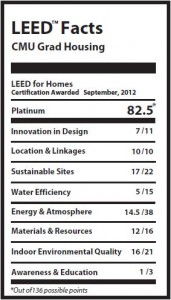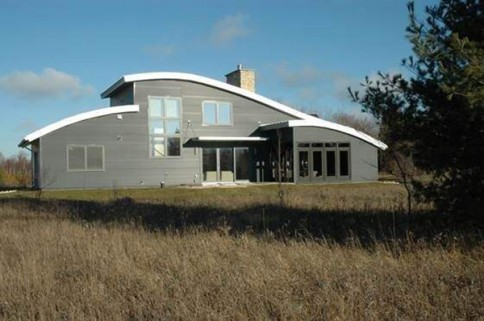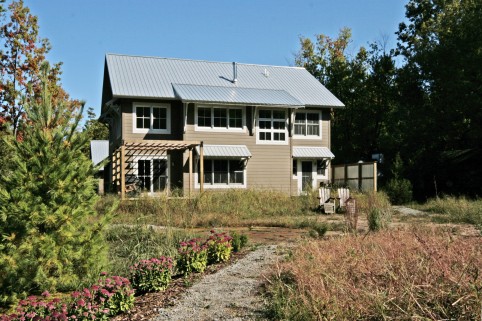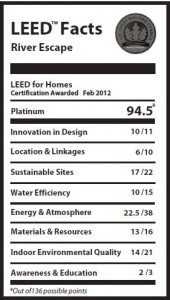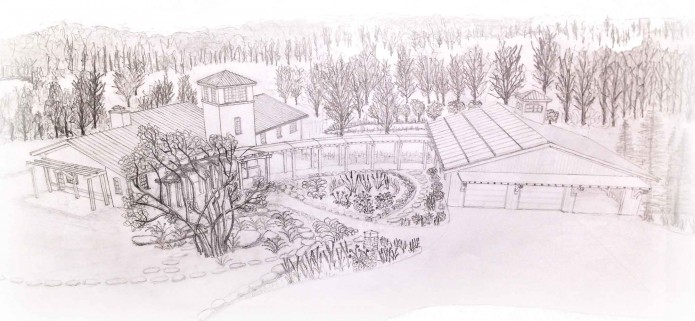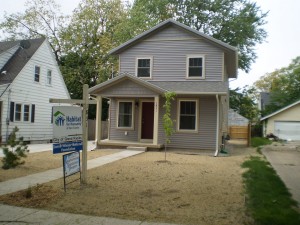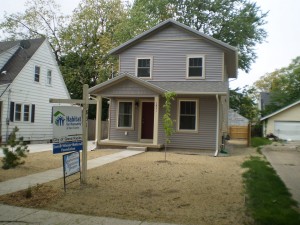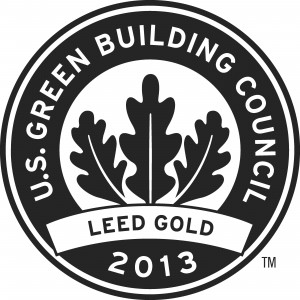Thanks to Jetson Green for sharing this awesome post! (Article written by Christine Walsh on Nov. 28, 2013)
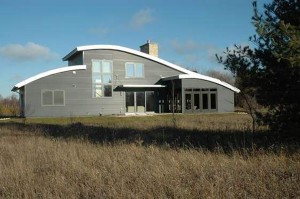
Architect Virge Temme of Sturgeon Bay, Wisconsin recently received the LEED Platinum for Homes certification for a private residence she designed near Gills Rock. The home was built by Bay Lakes Builders, and the plans were based on the collaboration of all members of the construction and design team so as to ensure proper integration of all systems. The electric and fuel bills for this 2,600-square-foot house were less than $30 per month on average during its first year. This is only the seventh home in Wisconsin to receive the LEED Platinum certification.
The building process started with the excavation of the meadow where the house stands, while the top soil was stockpiled and used for final grading later. Once the foundation was complete, the foundation forms were stripped and the below-slab plumbing and electrical runs installed. The builders continued with laying thermal tarp to protect the home from freezing rains. This was followed by the installing of under-slab insulation. All the joints were staggered and sealed in this process to prevent air movement between layers. Furthermore, all the penetrations through insulation were foam sealed, which protects against cold seepage and potential Radon gasses.
The roof was then installed, using 16″ I-joists to reduce thermal transmission and to provide additional insulation depth. The I-joists were placed directly over the studs below and the framed walls with studs at 24″ on center to reduce redundant top plate, which also reduced the overall framing materials need. The rafters were then screwed and strapped to studs to provide additional protection from wind. All the intersections were then foam-sealed.
To provide a continuous envelope 3/8″ OSB was added to the under side of rafters. Double 2-4 plates were screwed below the rafters to provide an electrical chase, eliminating the need for roof penetrations. The builders also used ladder framing, which greatly reduced the amount of redundant materials at wall-to-wall connections. Double-wall construction also eliminated thermal bridging and provided space for additional insulation.
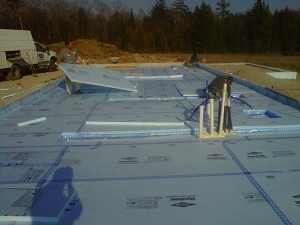
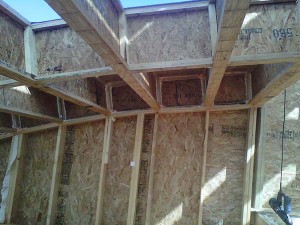
The house has insulation values of R-45 for walls, R-60 for the roof, and R-30 for ground insulation. Together with passive solar orientation and specially-coated windows to introduce solar warming, and which also feature overhangs to protect from summer over-heating, there is no need for a furnace or a boiler for space heating.
Other sustainable features of the home include:
– Sustainably-harvested framing materials
– Recycled/recyclable metal siding, roofing and insulation
– Drought-tolerant plants replanted around the home
– Rain gardens for roof runoff
– Only low- or no-VOC paints, adhesives and insulation were used to ensure better air quality
– Floors are made of concrete and sustainably harvested bamboo
– Only highly efficient appliances, lighting fixtures, and plumbing were installed
– The building process resulted in almost no construction waste
View LEED project Profile Here
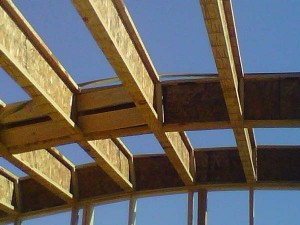
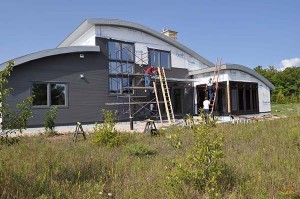
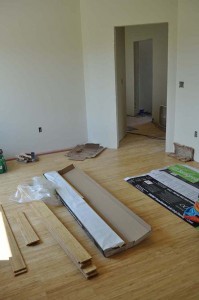
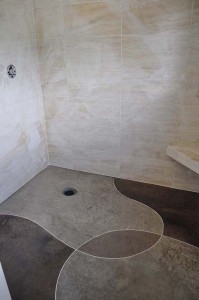
Article tags: alternative energy, Development, energy efficiency, green building, LEED,leed certification, LEED Platinum, modern architecture, modern design, passive house, residential, water efficiency
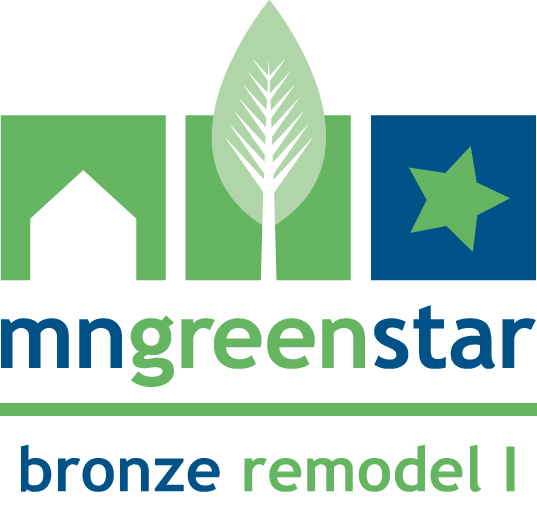
 Quarve Contracting, Inc. has completed a Minnesota GreenStar Pilot remodeling project for the Gitzen home, a 1957 rambler in Roseville. Homeowners, Chuck and Kathy Gitzen worked with Quarve Contracting, Inc. by volunteering some sweat equity. They’ve installed their own rain garden, indoor and outdoor compost bins, rain barrels and reducing their energy costs by installing CFL lighting. Green Remodeling does not need to add extra costs to a remodeling project. It can reduce homeowner’s energy costs well into the future. The Gitzen’s scope of work included; reinsulating the home, sealing bypasses, which resulted in a 44% tighter home. This came in as one of the tightest home tested for MN GreenStar. We removed a side door on the west side of home and installed a new window in the south side. The light switch in the room was switched so one switch could shut down all computer monitors and cpu units. We also installed: windows, solar tubes, energy effeicent doors, Energy Star rated appliances and life-time warranty – Energy Star rated – United States Platinum Seamless Steel Siding with a natural drainage plan and ceramic based paint which is solar reflective. Ventilation was also an issue, we brought the home up to manufacturer specifications as there was no soffit ventilation before.By Julie Quarve, Quarve Contracting
Quarve Contracting, Inc. has completed a Minnesota GreenStar Pilot remodeling project for the Gitzen home, a 1957 rambler in Roseville. Homeowners, Chuck and Kathy Gitzen worked with Quarve Contracting, Inc. by volunteering some sweat equity. They’ve installed their own rain garden, indoor and outdoor compost bins, rain barrels and reducing their energy costs by installing CFL lighting. Green Remodeling does not need to add extra costs to a remodeling project. It can reduce homeowner’s energy costs well into the future. The Gitzen’s scope of work included; reinsulating the home, sealing bypasses, which resulted in a 44% tighter home. This came in as one of the tightest home tested for MN GreenStar. We removed a side door on the west side of home and installed a new window in the south side. The light switch in the room was switched so one switch could shut down all computer monitors and cpu units. We also installed: windows, solar tubes, energy effeicent doors, Energy Star rated appliances and life-time warranty – Energy Star rated – United States Platinum Seamless Steel Siding with a natural drainage plan and ceramic based paint which is solar reflective. Ventilation was also an issue, we brought the home up to manufacturer specifications as there was no soffit ventilation before.By Julie Quarve, Quarve Contracting

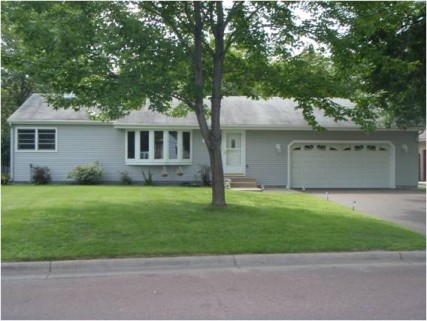
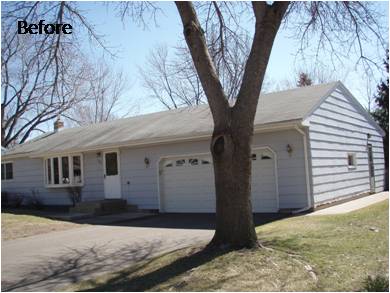
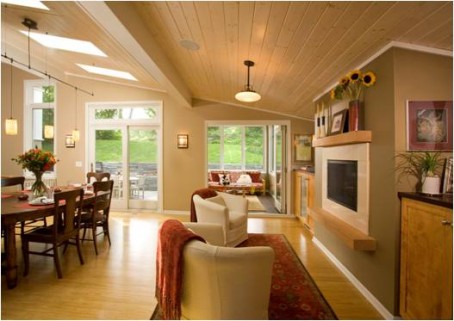
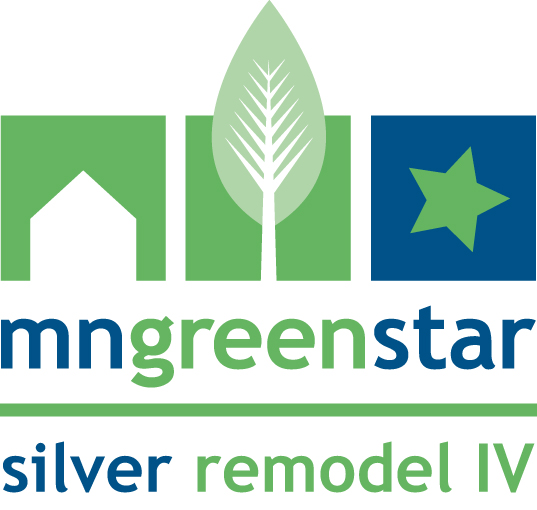
 The owners of this split-level home wanted an addition that was healthy and provided more space. The problems with this home were its uneven slope and its lack of natural lighting and good flow. To fix these concerns the yard was carved evenly to the ground before the addition started and the positioning of the porch was placed in the most direct sunlight to provide ample natural lighting. An addition was added to the back of the existing house to provide additional spaces: an office, dining room, family room and a four season sunroom. By adding skylights in the great-room it fixed the problem of lighting and made the space more open. From start to finish this project was designed, constructed, and finished in GREEN and followed the state green certification requirements which included: tests, energy calculations and inspections. The homeowners enjoy the extra space with lower energy bills.The homeowner commented on our project that “We chose Mike Otto as a builder based on four primary things: quality, reliability, cost, and his support of doing a green project. Mike was supportive of doing a green remodel from the beginning; he actually got us involved in GreenStar. He helped tremendously as we made choices based on the GreenStar checklist, and gave us a lot of guidance on some of the things you don’t see when you look at the new space — things like framing techniques, insulation and heating and cooling. The final product is beautiful, well-executed and built to last.”By Mike Otto, Mike Otto Construction
The owners of this split-level home wanted an addition that was healthy and provided more space. The problems with this home were its uneven slope and its lack of natural lighting and good flow. To fix these concerns the yard was carved evenly to the ground before the addition started and the positioning of the porch was placed in the most direct sunlight to provide ample natural lighting. An addition was added to the back of the existing house to provide additional spaces: an office, dining room, family room and a four season sunroom. By adding skylights in the great-room it fixed the problem of lighting and made the space more open. From start to finish this project was designed, constructed, and finished in GREEN and followed the state green certification requirements which included: tests, energy calculations and inspections. The homeowners enjoy the extra space with lower energy bills.The homeowner commented on our project that “We chose Mike Otto as a builder based on four primary things: quality, reliability, cost, and his support of doing a green project. Mike was supportive of doing a green remodel from the beginning; he actually got us involved in GreenStar. He helped tremendously as we made choices based on the GreenStar checklist, and gave us a lot of guidance on some of the things you don’t see when you look at the new space — things like framing techniques, insulation and heating and cooling. The final product is beautiful, well-executed and built to last.”By Mike Otto, Mike Otto Construction
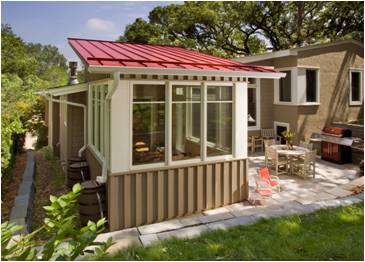
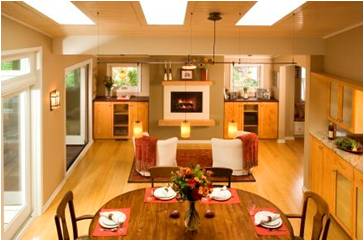 For more information on this project visit
For more information on this project visit 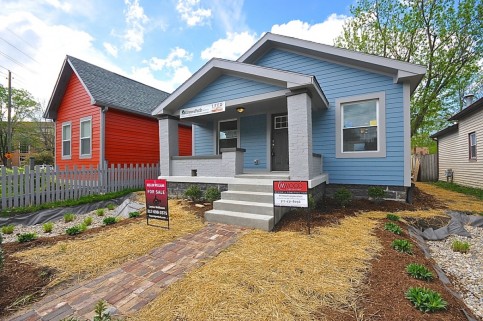
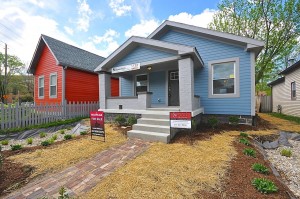
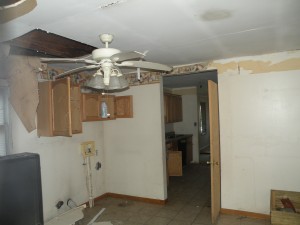
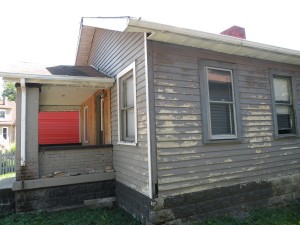
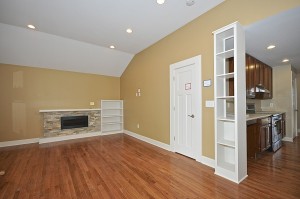 Th
Th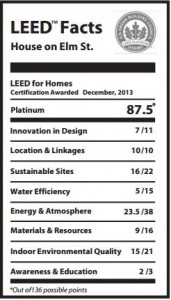
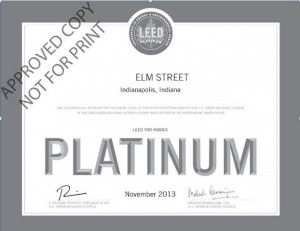
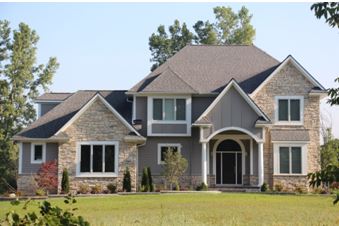
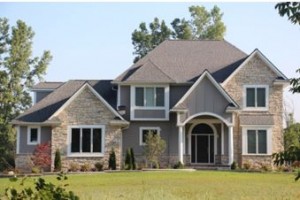
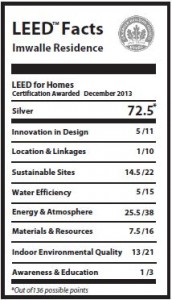
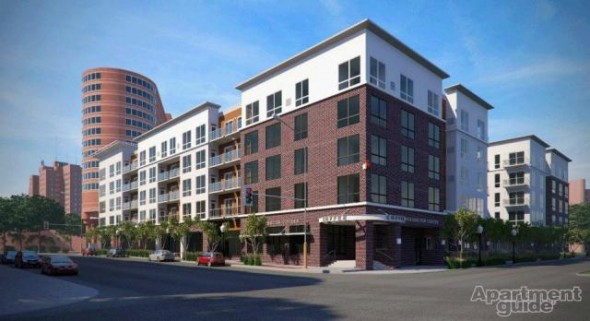


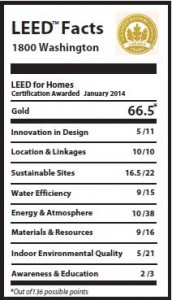
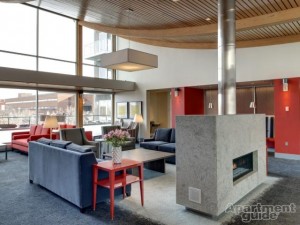

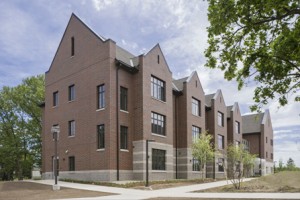
 SUSTAINABLE SITE
SUSTAINABLE SITE